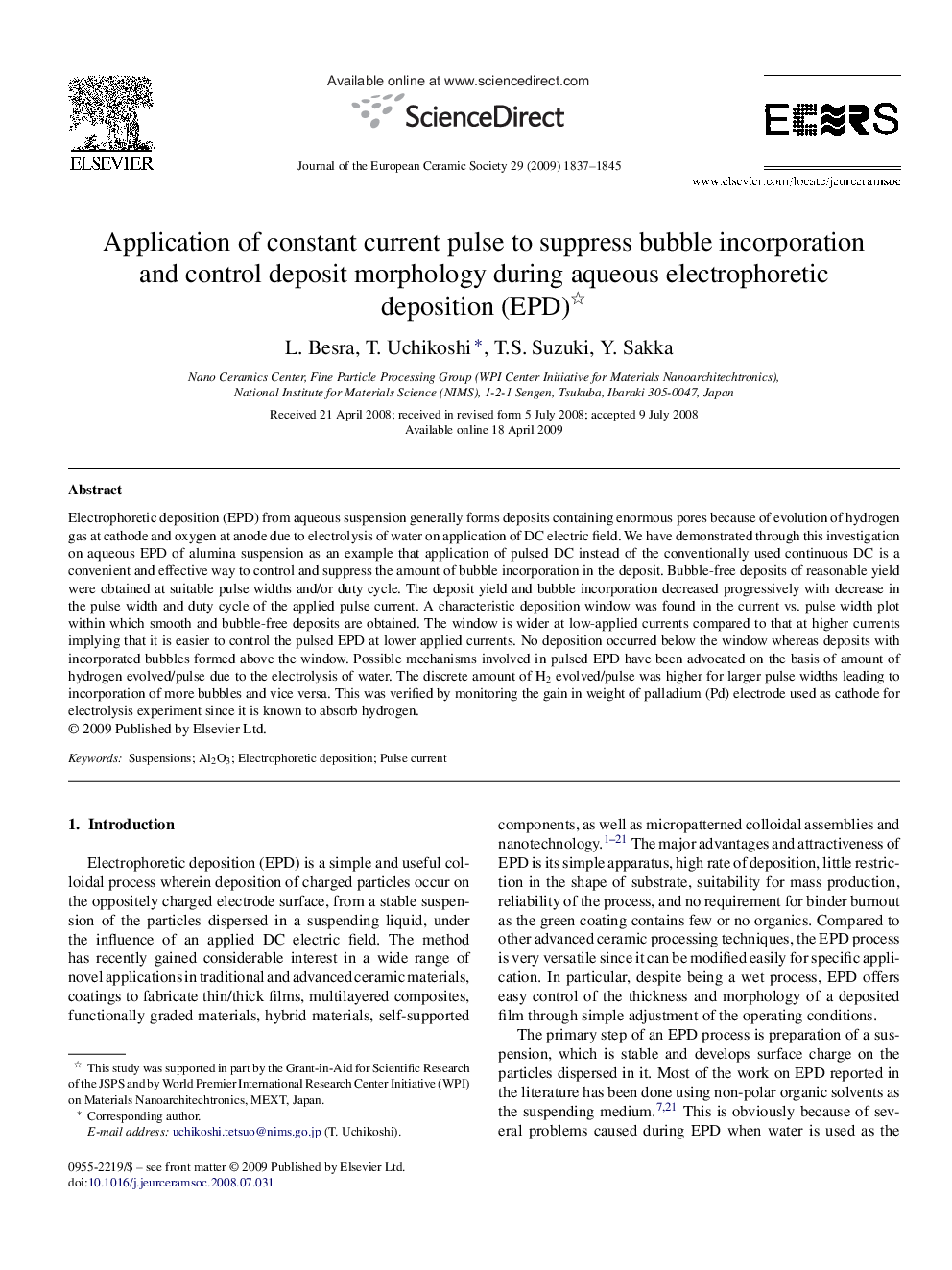| کد مقاله | کد نشریه | سال انتشار | مقاله انگلیسی | نسخه تمام متن |
|---|---|---|---|---|
| 1475345 | 991117 | 2009 | 9 صفحه PDF | دانلود رایگان |

Electrophoretic deposition (EPD) from aqueous suspension generally forms deposits containing enormous pores because of evolution of hydrogen gas at cathode and oxygen at anode due to electrolysis of water on application of DC electric field. We have demonstrated through this investigation on aqueous EPD of alumina suspension as an example that application of pulsed DC instead of the conventionally used continuous DC is a convenient and effective way to control and suppress the amount of bubble incorporation in the deposit. Bubble-free deposits of reasonable yield were obtained at suitable pulse widths and/or duty cycle. The deposit yield and bubble incorporation decreased progressively with decrease in the pulse width and duty cycle of the applied pulse current. A characteristic deposition window was found in the current vs. pulse width plot within which smooth and bubble-free deposits are obtained. The window is wider at low-applied currents compared to that at higher currents implying that it is easier to control the pulsed EPD at lower applied currents. No deposition occurred below the window whereas deposits with incorporated bubbles formed above the window. Possible mechanisms involved in pulsed EPD have been advocated on the basis of amount of hydrogen evolved/pulse due to the electrolysis of water. The discrete amount of H2 evolved/pulse was higher for larger pulse widths leading to incorporation of more bubbles and vice versa. This was verified by monitoring the gain in weight of palladium (Pd) electrode used as cathode for electrolysis experiment since it is known to absorb hydrogen.
Journal: Journal of the European Ceramic Society - Volume 29, Issue 10, July 2009, Pages 1837–1845